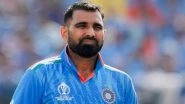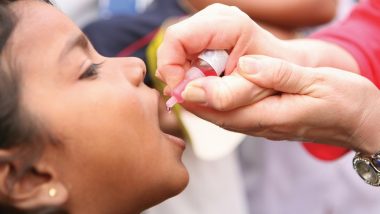Polio is a highly contagious viral disease seen mostly in children. Caused by the poliovirus, the disease is known to affect the nerve cells and the spinal cord, impairing movements in the infected person. In recent years, many countries like India have eradicated the disease through aggressive immunisation programmes. But it has since reappeared in strife-ridden countries like Syria and Israel where vaccination drives are affected. Every year, on October 24, World Polio Day is observed by Rotary International to commemorate the birth of Jonas Salk who led the team that developed the polio vaccine. On World Polio Day 2019, let us learn important facts such as symptoms, causes, treatment and prevention of the viral disease. ‘Don’t Give Polio Drops To Children Under 5’ Fake WhatsApp Forward Spreads Fake News About Polio Vaccines.
Symptoms of Polio
In most cases, symptoms occur within three to five days after getting exposed to the poliovirus. These mild symptoms include:
• Headache
• Fever
• Sore throat
• Vomiting
• Lack of appetite
• Malaise
The more severe form of symptoms of polio (known as paralytic polio) include:
• Fever
• Headache
• Still neck
• Muscle pain
• Abnormal skin sensations
• Muscle spasms
Causes of Polio
Polio is caused by the poliovirus, which spreads mainly through the faecal-oral route. The virus is shed through the infected person’s faeces in areas where there is poor sanitation. It can then spread through water or through touch. Once inside the intestines, the virus multiplies and enters the nervous system, resulting in paralysis. Will Polio Return to India? Contaminated Vaccines Raise Concerns That the Eradicated Disease May Strike Again.
Diagnosis and Treatment of Polio
Diagnosis of paralytic polio is made through a neurological examination. The doctor performs a test to check the muscle reflexes, weaknesses and other abnormalities in muscle functions. Poliovirus can also be detected through throat swabs and stool testing. Pathologists can also detect it by looking for antibodies in the blood.
Once the person is infected by the poliovirus, no cure or treatment will work. But diagnosing the disease on time can reduce some of the effects of polio. Bed rest, pain management, proper diet and therapy can curb some of the physical deformities caused by the disease.
Mechanical breathing devices are used in people whose respiratory muscles are weakened by the poliovirus.
Prevention of Polio
The biggest weapon against polio is vaccination. Only prevention can help protect people against the deadly disease. Inactivated strains of the poliovirus are given by injection or oral drops. Oral polio drops are the most effective, but in some cases, it can cause paralytic polio, according to Harvard Health. So in countries where polio has been eradicated, only the inactivated polio vaccine is given.
Once the virus that causes polio has infected a person, there is no treatment that will cure polio. Early diagnosis and supportive treatments such as bed rest, pain control, good nutrition, and physical therapy to prevent deformities from occurring over time can help reduce the long-term symptoms due to muscle loss.
(The above story first appeared on LatestLY on Oct 24, 2019 09:00 AM IST. For more news and updates on politics, world, sports, entertainment and lifestyle, log on to our website latestly.com).













 Quickly
Quickly


